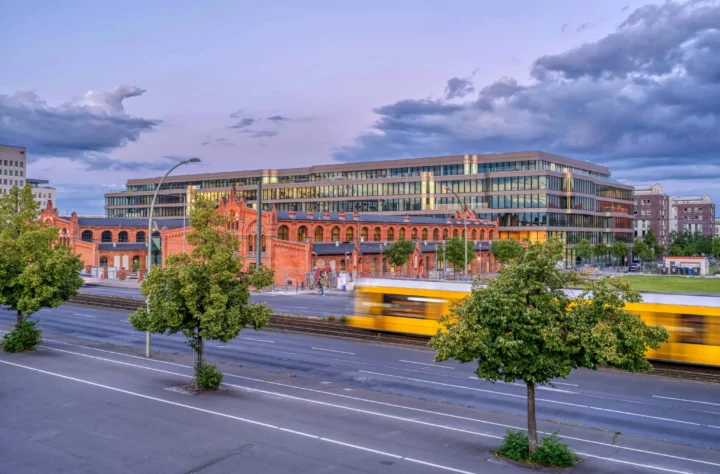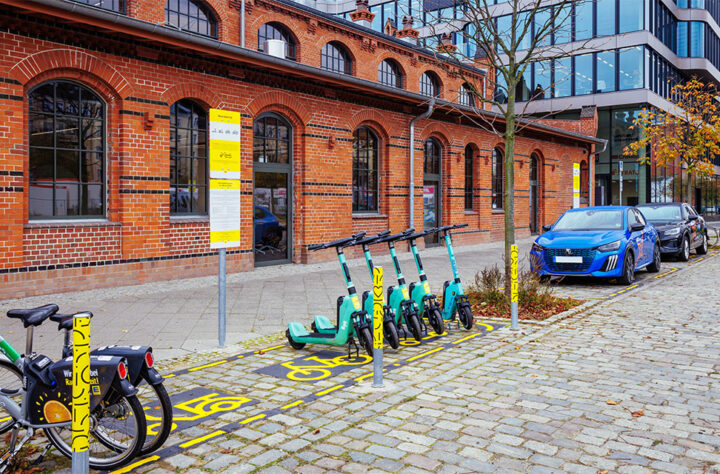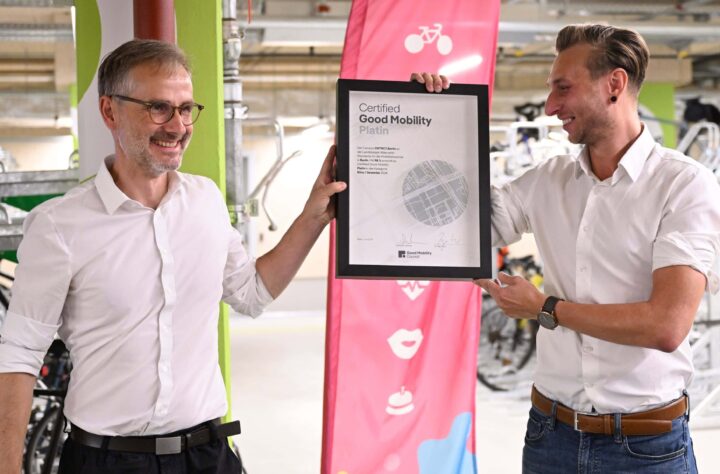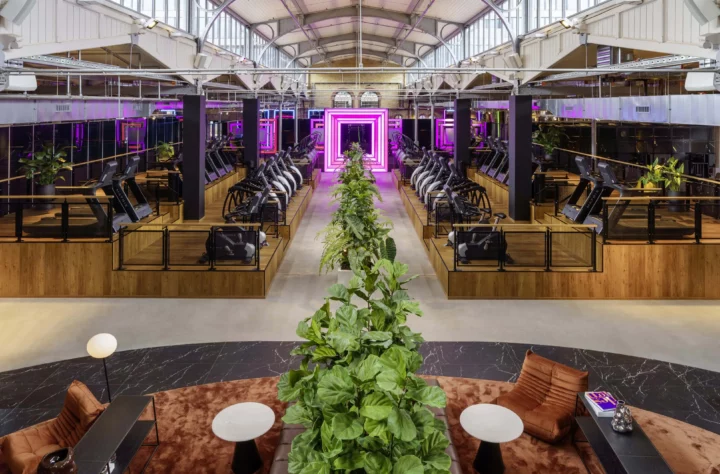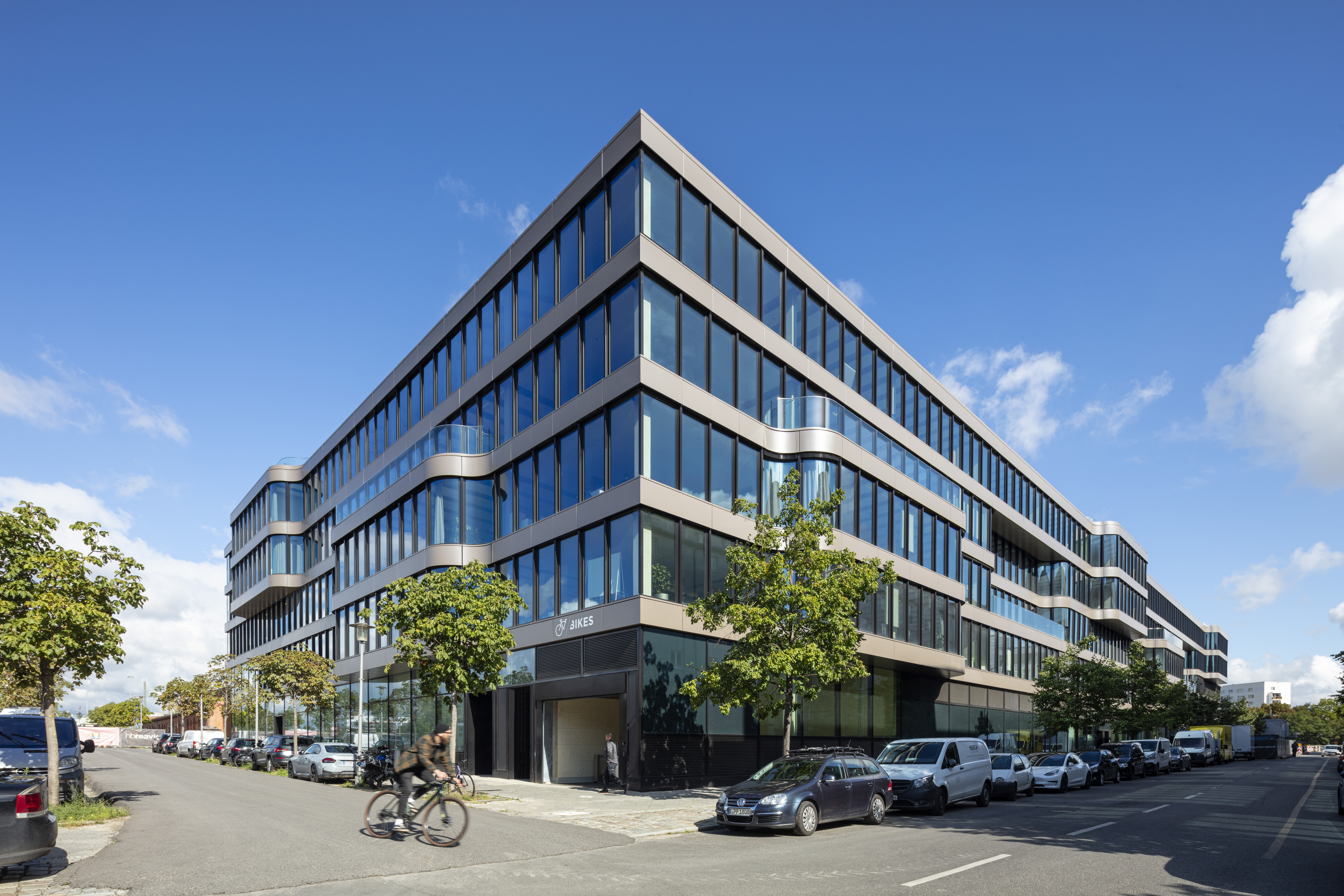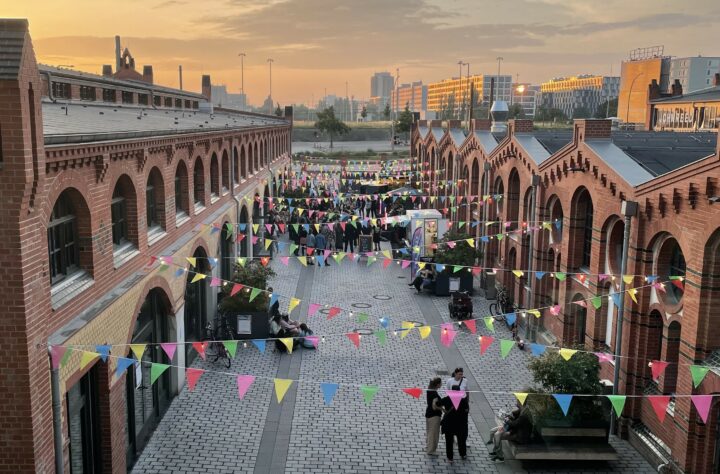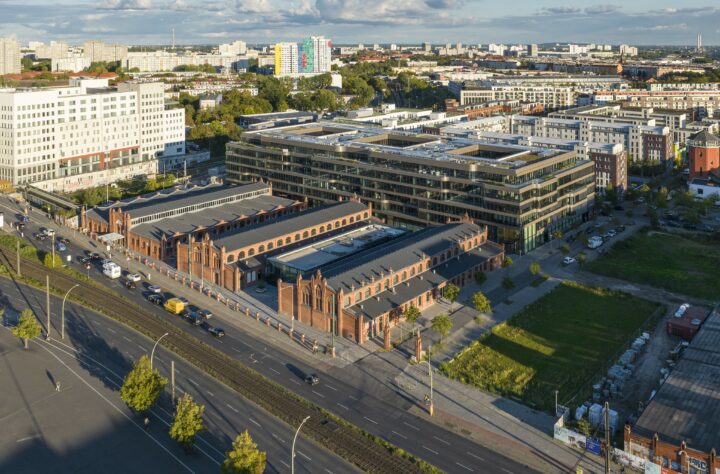The beginning
It all began with Rudolf Virchow, a doctor and representative of the German Freedom Party, who wanted to contain the frequent foot-and-mouth disease in Berlin. Therefore, in 1881, a “Central Vieh und Schlachthof” was established between the present-day districts of Prenzlauer Berg – to which the site politically belongs – Friedrichshain and Lichtenberg.
His law on banning “backyard slaughtering” in 1887 ensured that only controlled slaughtering was now permitted. The location was ideal because of Berlin’s new drainage system via the so-called “Rieselfelder” and because of the new Ringbahn (circular railroad).
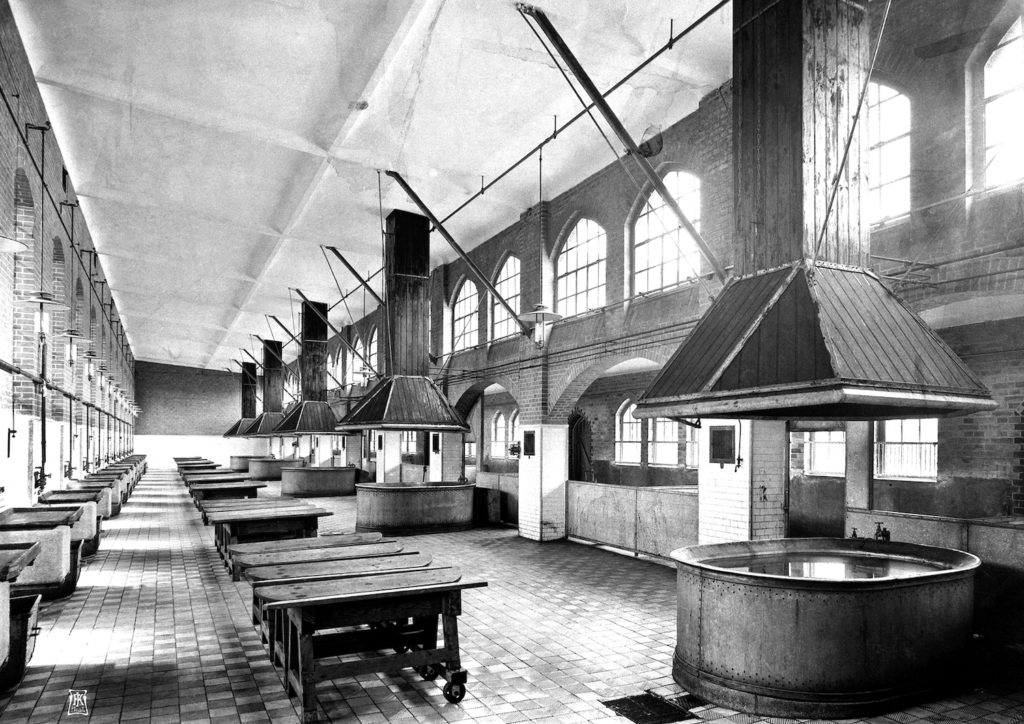
Based on the concepts of hygiene by Rudolf Virchow and the designs of the city architect Hermann Blankenstein, the new slaughterhouse was initially constructed on an area of just under 37 hectares. In 1898, it was extended by further 13 hectares towards Landsberger Allee. This “New Slaughterhouse” was built under the direction of master builder August Lindemann. Now covering 50 hectares, the area served not only for slaughtering, but also for livestock trading. Due to the 15.5 km of adjoining railroad tracks, the livestock was directly transported there.
Under the first director of the “Central Vieh- und Schlachthof”, the royal economist council Otto Hausburg, 126,347 cattle, 392,895 pigs, 111,937 calves and 650,060 mutton were already processed in the first business year. In addition to the slaughterhouses, the western part of the site, which was divided into two parts, housed the actual slaughterhouse with the facilities for processing the meat. A wall separated this part from the cattle yard. Here were four large sales halls, numerous stables, two administration buildings and the stock exchange building located.
The postwar period
During World War II, 80 percent of the site was destroyed by Allied air strikes in 1945. Up until then, operations were carried on for the most part. After the war, large parts of the site were used by the Soviets as a storage facility for reparations and looted art. Among other things, the Pergamon Altar and the leaded glass windows of St. Mary’s Church in Frankfurt/Oder were stored here. In other areas, however, repair work was carried out immediately after the capitulation to ensure supplies for the population of Berlin.
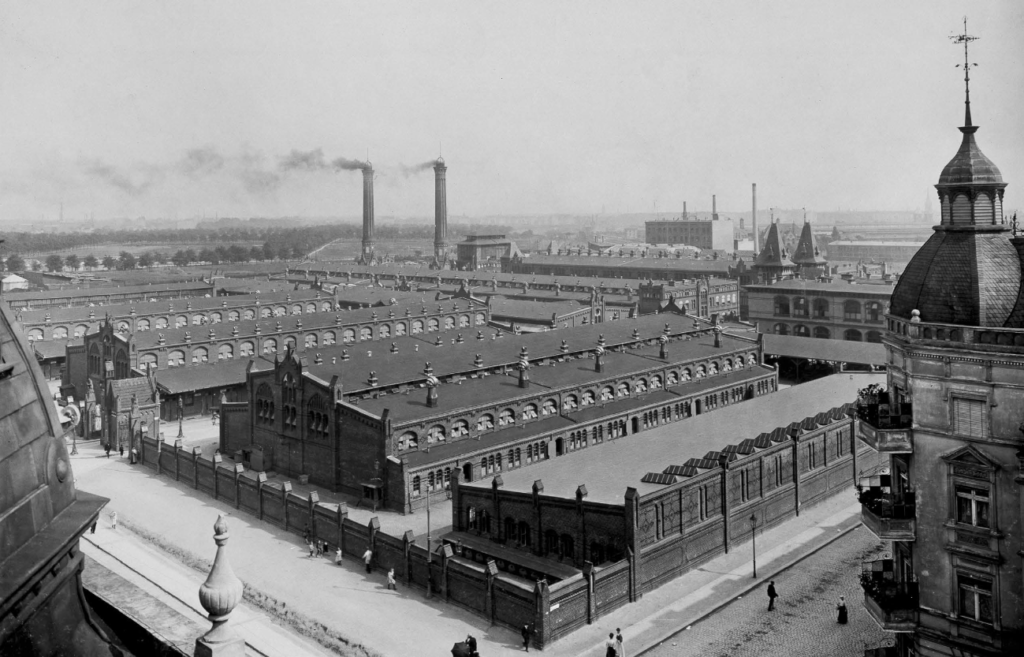
Under the GDR, the “Zentral Vieh- und Schlachthof” (Central Livestock and Slaughterhouse) quickly became the leading facility in the meat-processing industry of East Berlin. In 1958, it was transformed into a publicly owned enterprise (VEB). In 1963, it was incorporated into the “VEB Fleischkombinat Berlin”. Up to 2700 employees worked on the site.
During this time, the meat and butchering operations were concentrated mainly in the area between Thaerstraße and Landsberger Allee. However, the noise and especially the unpleasant odor led to significant complaints from the neighborhood. Therefore, the site of the Old Livestock and Slaughterhouse was gradually transferred to other state-owned facilities.
A new life
After the fall of the Berlin Wall, a new function for the area of the Central Livestock and Slaughterhouse was developed with the application of the then Berlin Senate to host the 2000 Summer Olympics. The 50-hectare site was intended to house apartments for accredited journalists, and later to serve as housing for residents of Berlin. The plan failed and Sydney was awarded the Olympic Games. Numerous demolition works had already begun on the site of the slaughterhouse.
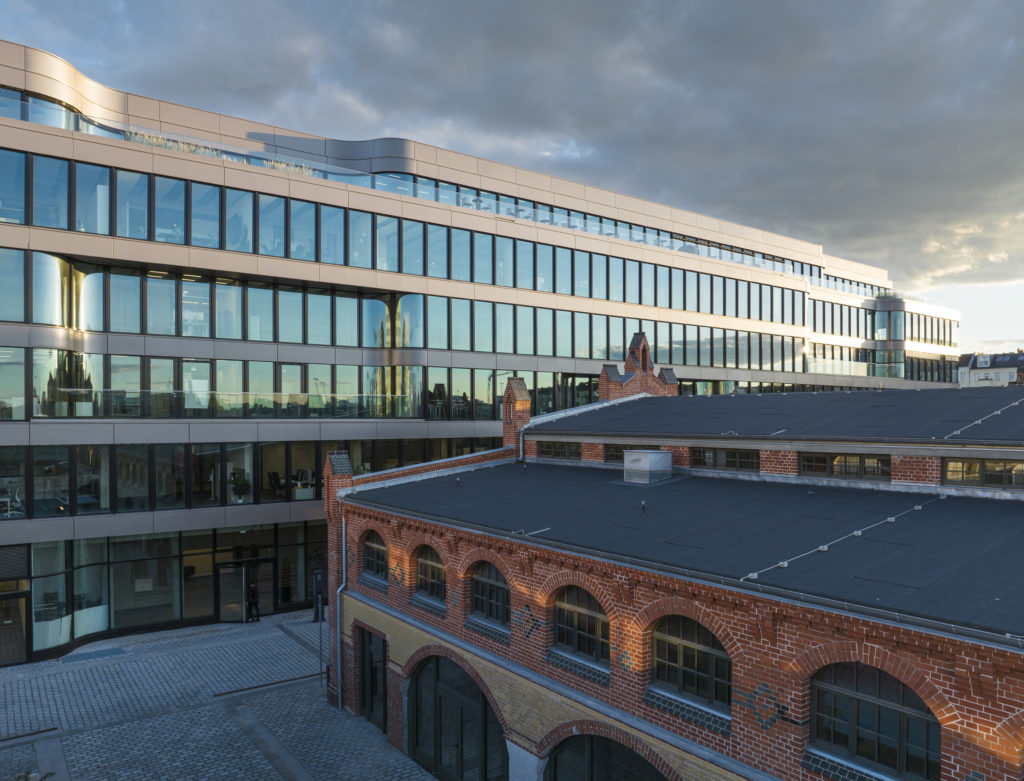
In July 1993, the area was formally designated as the development area “Alter Schlachthof Berlin”. The “City Development Association Eldenaer Street (s|es)”, which was newly founded in November, was commissioned with the planning and design. Divided into the five sub-quarters “Hausburgviertel”, “Thaerviertel”, “Blankensteinpark”, “Eldenaer Viertel” and “Pettenkofer Dreieck”, the plan envisioned around 250,000 m2 of commercial space and apartments for 4,500 residents, as well as new streets and generous green spaces.
The preservation of several landmarked halls was also included in the planning. New buildings were quickly built, especially in the Hausburg district; the old water tower was reconstructed, and a gym was built for the Hausburg School, which was located outside the area. The first residents moved into rental houses in spring 2002. The former pig-and calf slaughterhouses on the Landsberger Allee were converted for new uses. Along with the newly built office complex behind the historic halls, they form the DSTRCT.Berlin. Based on the annual social atlas, the new residential neighborhood seems to be very popular with young and old.
